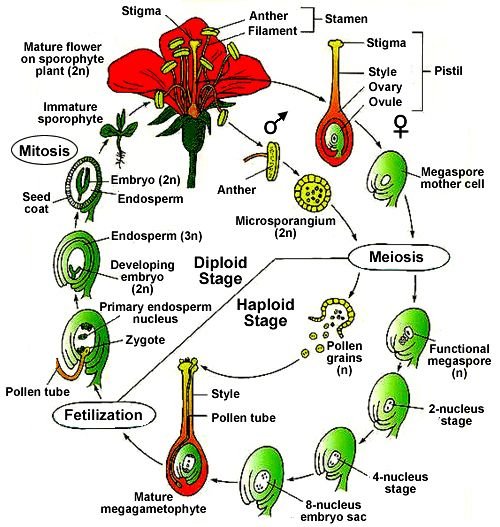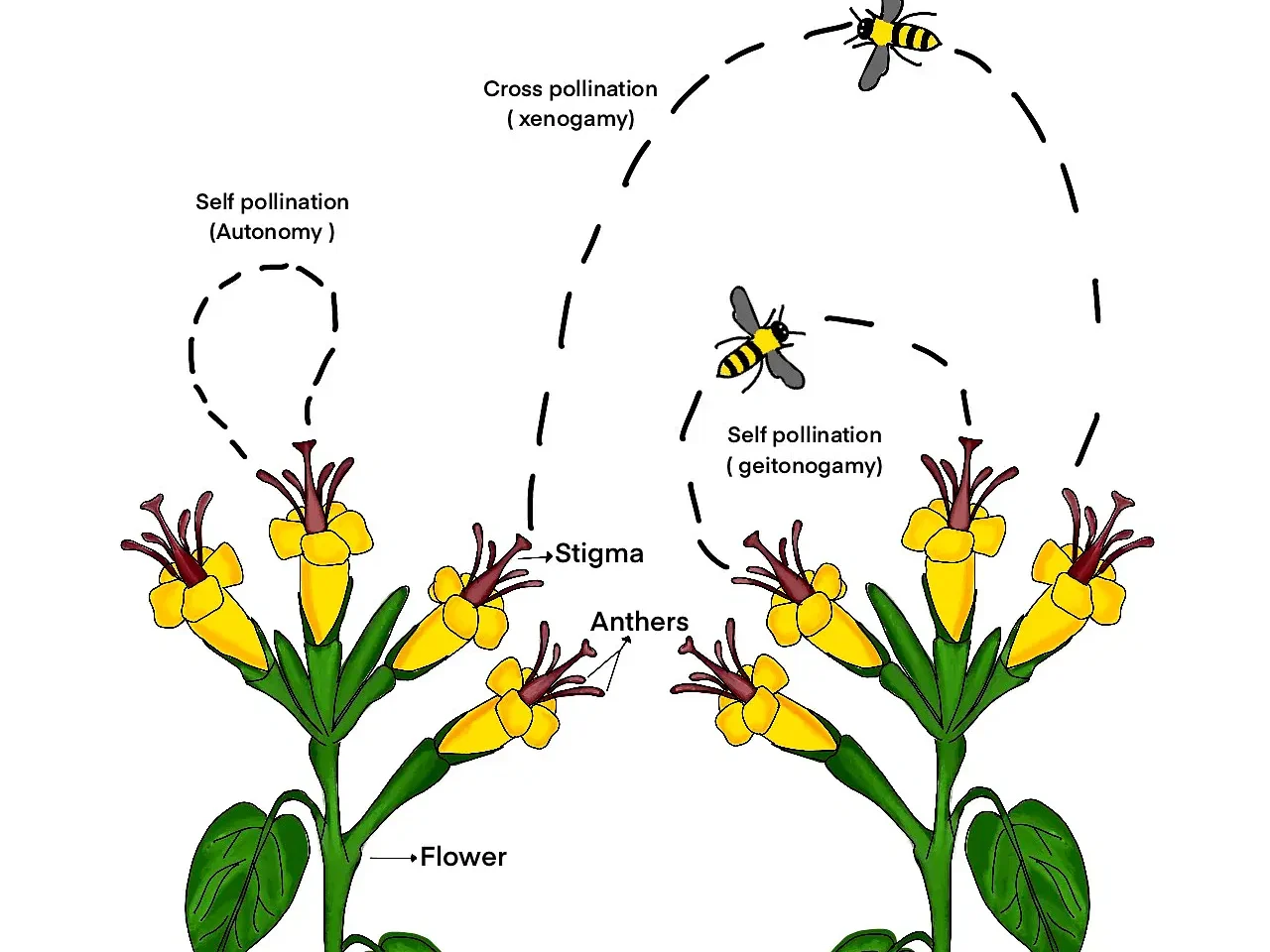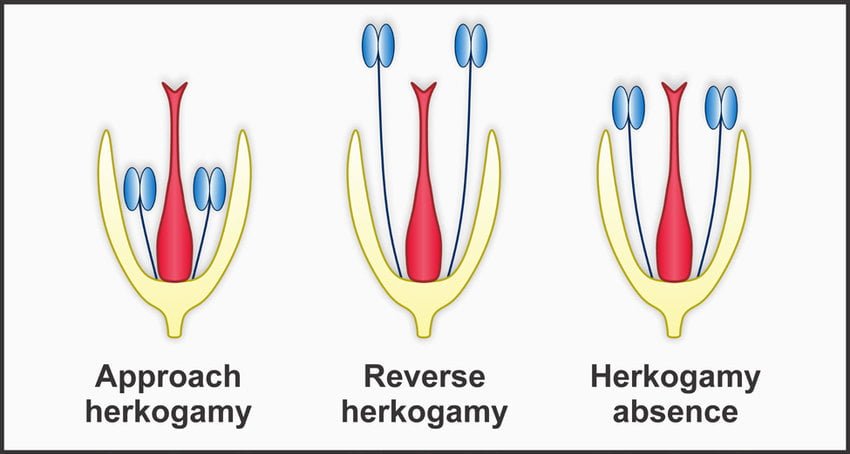Flowers are the reproductive structures of angiosperms, containing both vegetative and reproductive parts. The key roles of these parts are to attract pollinators, protect reproductive organs, and facilitate the process of pollination and fertilization to produce seeds.
Vegetative Parts
- Petals (Corolla): These are often brightly coloured or scented to attract pollinators such as bees, butterflies, and birds. They can also have intricate patterns to guide pollinators toward the reproductive organs.
- Sepals (Calyx): Sepals are often green and resemble leaves. They protect the flower bud and, in some cases, support the petals after the flower opens.
- Receptacle: The base of the flower, where all the floral parts are attached. It provides structural support and can play a role in fruit development.
- Peduncle: The flower stalk that supports the receptacle and connects it to the main plant.
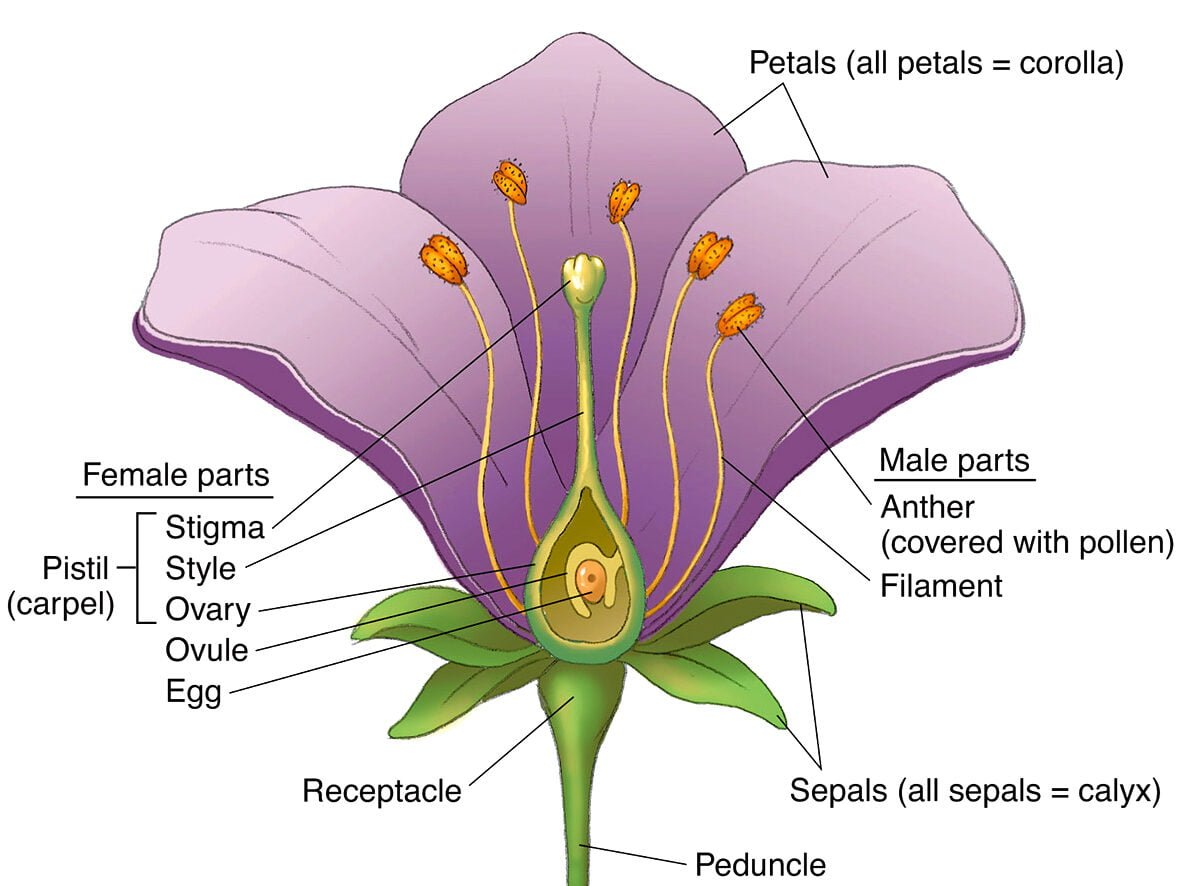 >
>Reproductive Parts
- Stamen (Androecium): This is the male reproductive part of a flower.
- Anther: Produces and releases pollen, which contains the male gametes.
- Filament: A stalk that supports the anther and elevates it to facilitate pollen dispersal.
- Pistil (Gynoecium or Carpel): The female reproductive part.
- Stigma: The sticky or feathery surface that captures pollen.
- Style: A tube connecting the stigma to the ovary, allowing pollen tubes to grow down toward the ovules.
- Ovary: Contains ovules where fertilization occurs. After fertilization, the ovules develop into seeds.
- Ovule: The potential seed that contains the female gamete (egg cell).
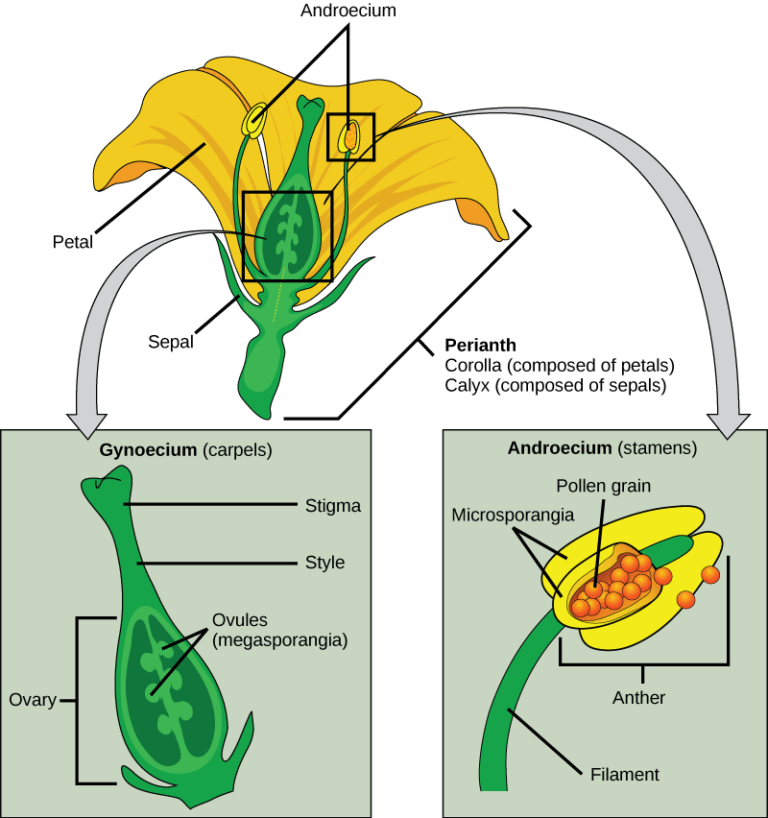 >
>Additional Flower Structures
- Nectarines: Glands that produce nectar, a sugary substance that attracts pollinators.
- Bracts: Modified leaves that can be found just below the flower or inflorescence, providing additional protection, or attracting pollinators.
Functions of Flowers
- Pollination: The transfer of pollen from the anther to the stigma. Pollination can occur via wind, water, or animal pollinators.
- Fertilization: When pollen reaches the stigma, a pollen tube grows down through the style into the ovary to fertilize the ovules.
- Seed Development: After fertilization, the ovules become seeds. The ovary may develop into a fruit that encases and protects the seeds.
- Dispersal: The fruit or seeds can be dispersed by wind, water, animals, or mechanical means, aiding in the plant’s reproduction and survival.
